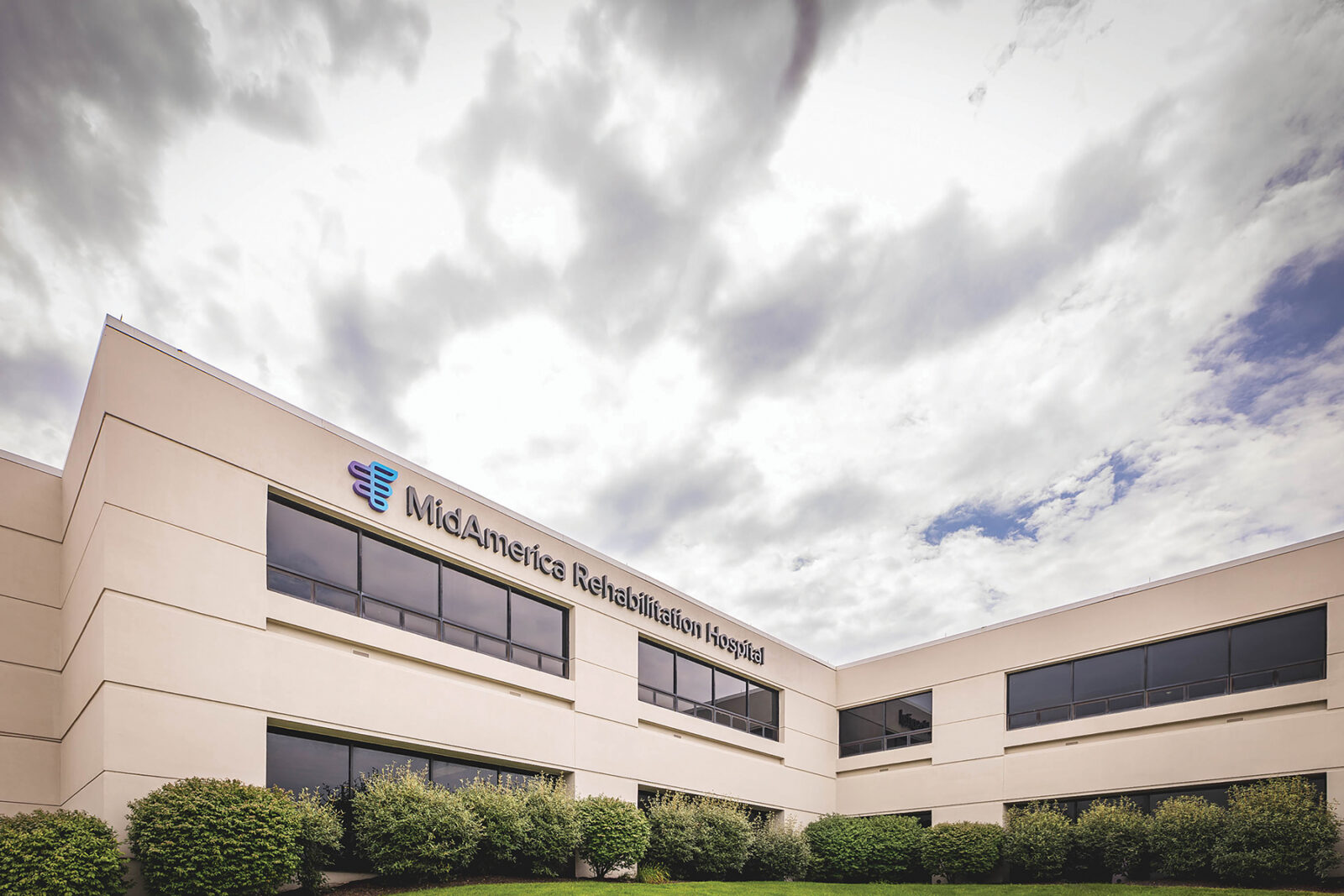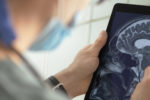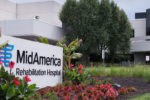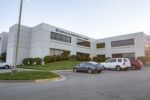Rewiring Life’s Pathways
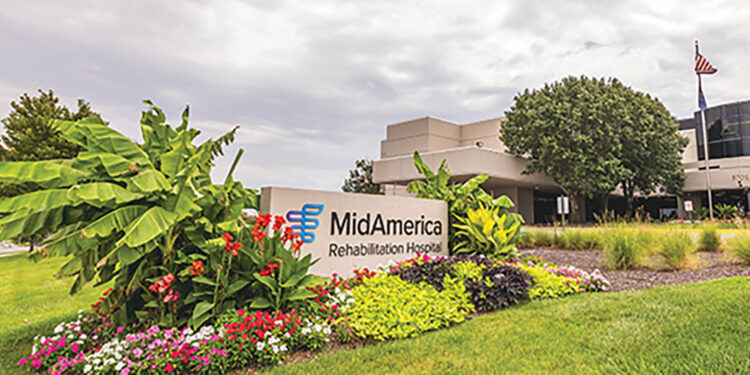
Story by Ann E. Butenas
Neural recovery takes courage, commitment, and cutting-edge care at MidAmerica Rehabilitation Hospital
The human brain’s remarkable plasticity – its ability to forge new neural connections and adapt to injury – forms the foundation of modern neurorehabilitation. At MidAmerica Rehabilitation Hospital in Overland Park, Kansas, this natural healing capacity meets cutting-edge technology and specialized expertise to create new possibilities for patients recovering from neurological conditions.
The restoration of neurological function after injury or illness requires specialized expertise and a comprehensive therapeutic approach. At MidAmerica Rehabilitation Hospital, patients benefit from evidence-based neuro-reeducation programs that address the complex challenges of brain injury, stroke, and other neurological conditions. The hospital’s expert therapists employ advanced techniques and technology to retrain the brain and nervous system, helping patients regain essential skills and maximize their independence through individualized treatment plans.
Robotic Revolution: How BURT Technology Helps Patients Reclaim Independence
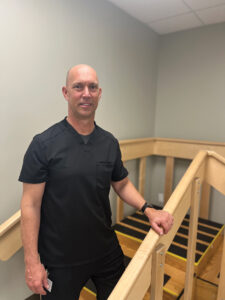 Among the hospital’s most innovative tools is BURT (Bilateral Upper Limb Rehabilitation Training), a sophisticated robotic therapy device from Barrett Technology designed to help patients recover arm and hand function after stroke or neurological injury. Eric Kelemen, OTR/L, NDT Trained, CLT and a specialist working with the technology, explained that BURT creates a uniquely engaging rehabilitation experience by allowing patients to float weightlessly on a cushion of air using Barrett’s GravityCradle™ technology.
Among the hospital’s most innovative tools is BURT (Bilateral Upper Limb Rehabilitation Training), a sophisticated robotic therapy device from Barrett Technology designed to help patients recover arm and hand function after stroke or neurological injury. Eric Kelemen, OTR/L, NDT Trained, CLT and a specialist working with the technology, explained that BURT creates a uniquely engaging rehabilitation experience by allowing patients to float weightlessly on a cushion of air using Barrett’s GravityCradle™ technology.
“We use it with stroke patients, those with brain injuries, and essentially anyone with a need for upper extremity movement,” expressed Kelemen. The system’s versatility allows it to adapt to patients at various stages of recovery. For those with no arm movement, BURT serves as a visualization device through its BURT Max mode, helping patients see their arm moving on screen. As patients progress, the BURT Assisted mode provides customized support based on their movement capabilities.
The system combines therapeutic movement with interactive gaming elements, too, offering a variety of different activities from Blackjack to specialized tasks like fishing and loading laundry.
“Patients seem to enjoy using it and typically want to do it again,” Kelemen noted. “They love to move their arm and feel it move, making their arm a part of them again.” This engagement leads to increased repetitions during therapy sessions, a crucial factor in neurological recovery.
Step Forward: Advanced Electrical Stimulation Restores Natural Walking Patterns
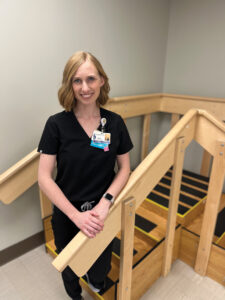 For patients struggling with foot drop and mobility challenges, innovative technology offers new hope. The Bioness L300, a sophisticated functional electrical stimulation (FES) device, represents a significant advancement in gait rehabilitation. Anna Cisper, PT, DPT, C/NDT, a physical therapist on the Stroke Care Team, indicated that this technology serves as a crucial intervention for patients whose neural pathways have been disrupted by stroke or other central nervous system injuries.
For patients struggling with foot drop and mobility challenges, innovative technology offers new hope. The Bioness L300, a sophisticated functional electrical stimulation (FES) device, represents a significant advancement in gait rehabilitation. Anna Cisper, PT, DPT, C/NDT, a physical therapist on the Stroke Care Team, indicated that this technology serves as a crucial intervention for patients whose neural pathways have been disrupted by stroke or other central nervous system injuries.
“When nerves aren’t properly connecting to muscles, we need to help create new pathways around the ‘roadblock,’” Cisper noted. The Bioness L300 achieves this through precisely targeted electrical stimulation that activates nerves and muscles responsible for lifting the foot during walking. While patients may experience a tingling sensation deeper than traditional TENS units, the treatment is generally well-tolerated.
The system’s sophistication lies in its ability to detect and optimize gait patterns in real-time. Therapists use iPad-based Bluetooth technology to connect with the device’s calf cuff, allowing them to fine-tune the electrical stimulation timing.
“We can get the stimulation at the exact point needed to bring the toes and foot up when walking,” Cisper said. This precise timing helps normalize walking patterns and reduce fall risk.
The Bioness L300’s practical benefits extend beyond the hospital setting. Its discrete, non-bulky design can be worn under clothing. Plus, certain insurance coverage options may make it accessible for home use. Additionally, the hospital maintains close relationships with regional Bioness representatives to address complex cases and ensure optimal outcomes for patients.
Integrating Innovation with Expert Care
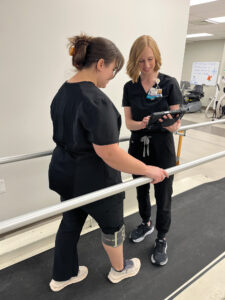 As healthcare technology continues to evolve, MidAmerica Rehabilitation Hospital remains at the forefront of neurological rehabilitation by integrating advanced systems like BURT and the Bioness L300 into personalized treatment plans. These innovative devices, combined with the expertise of skilled therapists, offer patients new pathways to recovery that weren’t possible just years ago.
As healthcare technology continues to evolve, MidAmerica Rehabilitation Hospital remains at the forefront of neurological rehabilitation by integrating advanced systems like BURT and the Bioness L300 into personalized treatment plans. These innovative devices, combined with the expertise of skilled therapists, offer patients new pathways to recovery that weren’t possible just years ago.
The success stories emerging from MidAmerica Rehabilitation Hospital underscore the transformative potential of this approach. While the ultimate success depends on factors such as the severity of the stroke or injury and the patient’s motivation, the combination of engaging technology and expert care provides both hope and measurable results on the journey to recovery.
As Cisper reflected on her work, she indicated the profound reward of helping patients progress from being unable to walk to achieving independent mobility.
“It’s an extra intervention we can use to make functional progress,” she emphasized, highlighting how technology enhances rather than replaces the fundamental human elements of rehabilitation care.

For more information on MidAmerica Rehabilitation Hospital and all its exceptional teams, visit them online at
encompasshealth.com or call 913-491-2400
